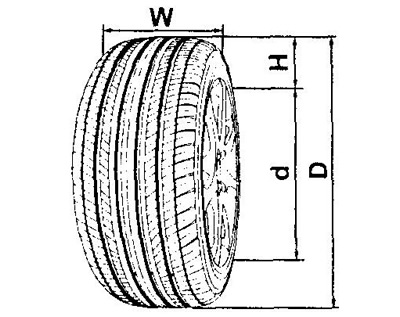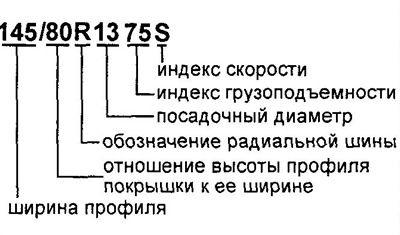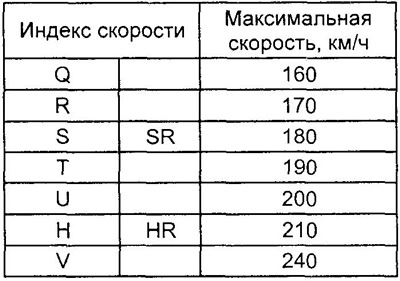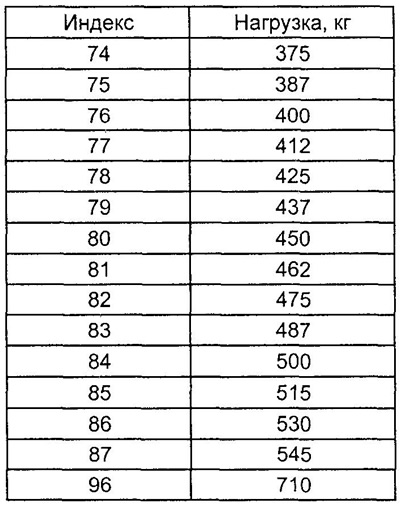Tires come in several types: road, universal (all season), winter, off-road. The type of tires is selected based on the operating conditions.

Tire sizes.
D - outer diameter,
d - landing diameter of the wheel rim,
H - tire profile height,
W - profile width.
When changing tires, use only tires of the same size and design as the recommended tires for your vehicle and with the same or greater load capacity.
The use of tires of any other size or type can seriously affect handling, comfort, speedometer/odometer accuracy, ground clearance, fuel economy, distance between the body and the tire or snow chain.
Attention: do not mix radial and diagonal tires. This can cause dangerous vehicle behavior leading to loss of control.

One of the following designations is possible in the marking:
145 - conditional profile width, expressed in millimeters. This size is selected based on the table "Tire markings and tire pressure" and must match the tire size recommended by the manufacturer.
80 - the ratio of the height of the tire profile to its width, expressed as a percentage (%).

If this designation is absent, then the ratio is 0.80... 0.82. This size is selected based on the table "Tire markings and tire pressure" and must match the tire size recommended by the manufacturer.
R - designation of the radial tire.
B - designation of a diagonal tire. Radial and bias tires differ in the arrangement of the cords. Radial tires have lower rolling resistance, longer life than bias tyres.
13 - tire diameter, expressed in inches. This size is selected based on the table "Tire markings and tire pressure" and must match the tire size recommended by the manufacturer.
75 - conditional index of carrying capacity. It is selected based on the table "Tire markings and tire pressure" and must comply with the tire load index recommended by the manufacturer.
S is the tire speed index. It is selected based on the table "Tire markings and tire pressure" and must comply with the tire speed index recommended by the manufacturer.
When marking tires, optional designations can be used:
6PR - ply rate, a conditional value indicating the bearing capacity of the tire, that is, the strength of its carcass (4PR - tires for passenger cars, 6PR and 8PR - tires for light trucks and minibuses).
Designations used when marking American-made tires:
LT - indicates the field of application for SUVs, small trucks and minibuses; in this case, P is a tire for passenger cars.
Table. Tire speed indexes.

Table. Tire load indexes.

